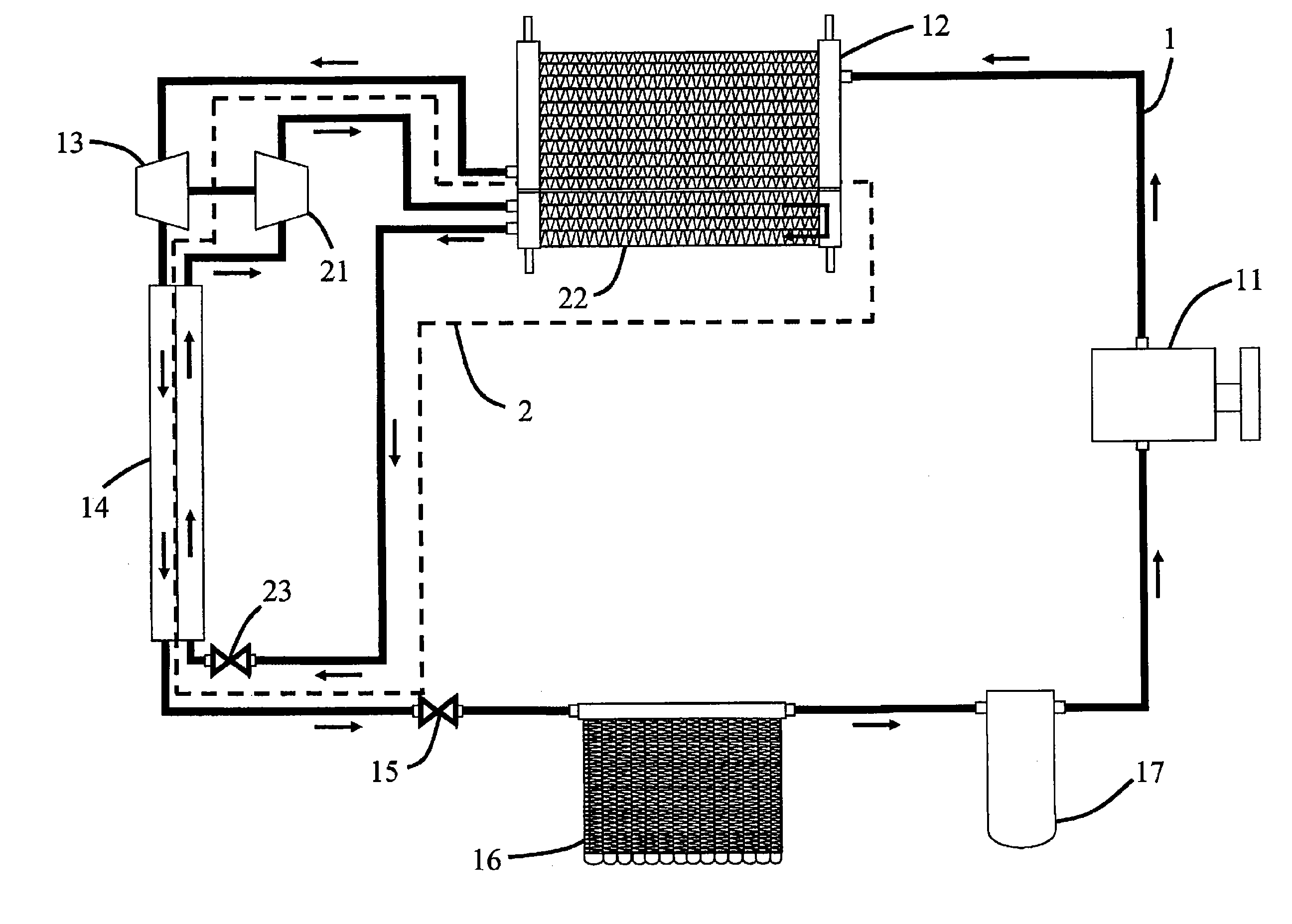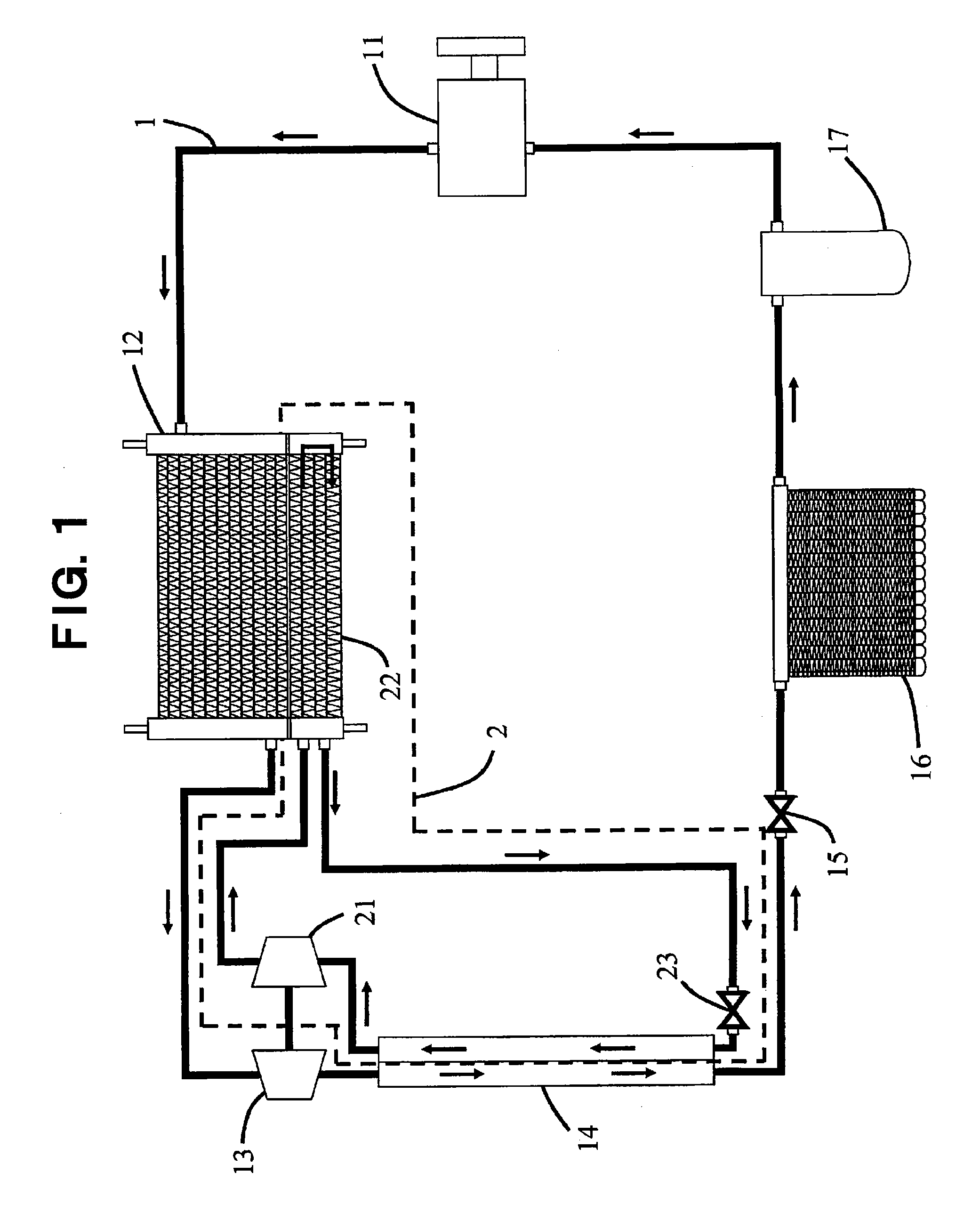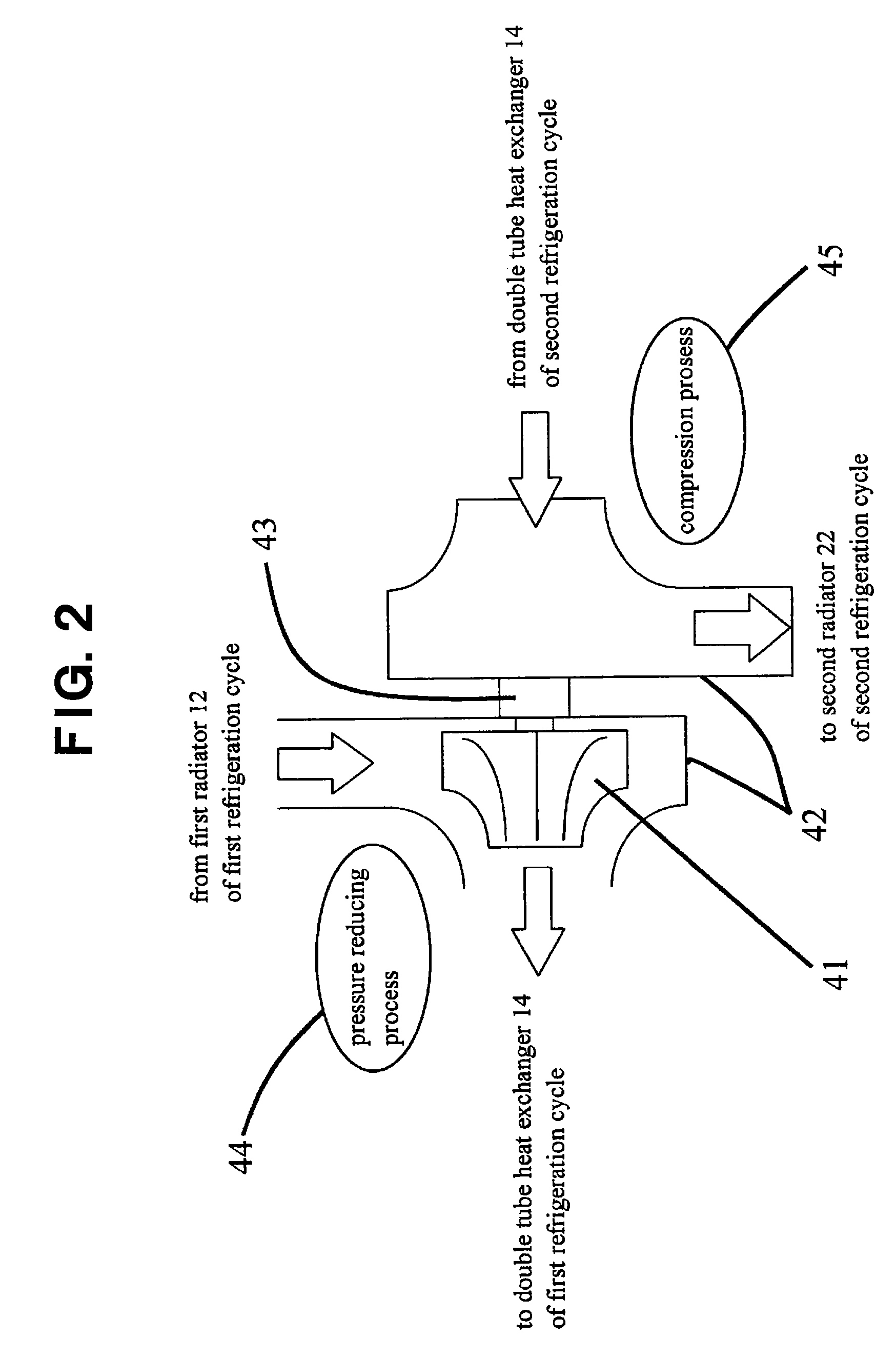Air conditioning systems for vehicles
a technology for air conditioning systems and vehicles, applied in the direction of subcoolers, lighting and heating apparatus, transportation and packaging, etc., can solve the problems of reducing the energy efficiency of carbon dioxide as a refrigerant, reducing and reducing the pressure so as to improve the energy efficiency of a natural refrigerant and reduce the effect of radiated natural refrigerant pressur
- Summary
- Abstract
- Description
- Claims
- Application Information
AI Technical Summary
Benefits of technology
Problems solved by technology
Method used
Image
Examples
Embodiment Construction
[0016] Preferred embodiments of the present invention, and their features and advantages, may be understood by referring to FIGS. 1-4B, like numerals being used for corresponding parts in the various drawings.
[0017] Referring to FIG. 1, a refrigeration cycle 1 may be a refrigeration cycle for cooling an interior of a vehicle. In this first refrigeration cycle 1, a first compressor 11 for compressing refrigerant and a first radiator 12, which may be a gas cooler, for radiating heat from refrigerant may be provided. An expander 13 for reducing a pressure of and expanding refrigerant volume may be provided at a downstream position of first radiator 12 in the refrigerant flow direction. Expander 13 may be configured to harness energy resulting from the pressure reduction and expansion part of a pressure reducing process for refrigerant, which may be due to adiabatic expansion at expander 13 that is isoentropic, thereby permitting harnessing of the resultant energy. Generally, using a k...
PUM
 Login to View More
Login to View More Abstract
Description
Claims
Application Information
 Login to View More
Login to View More - R&D
- Intellectual Property
- Life Sciences
- Materials
- Tech Scout
- Unparalleled Data Quality
- Higher Quality Content
- 60% Fewer Hallucinations
Browse by: Latest US Patents, China's latest patents, Technical Efficacy Thesaurus, Application Domain, Technology Topic, Popular Technical Reports.
© 2025 PatSnap. All rights reserved.Legal|Privacy policy|Modern Slavery Act Transparency Statement|Sitemap|About US| Contact US: help@patsnap.com



